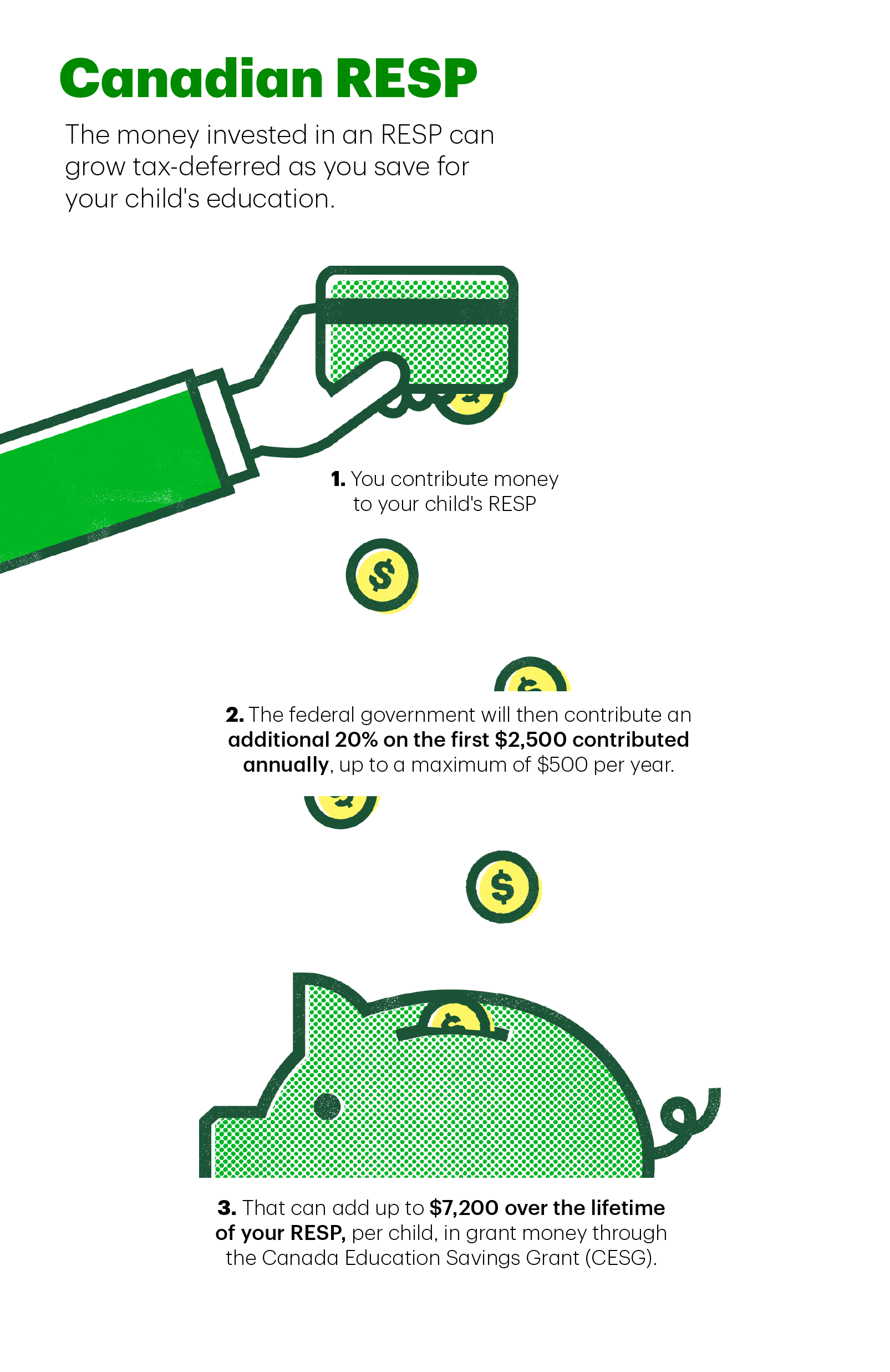On the eve of a parental leave, it's normal to experience a wide array of emotions: excitement, nervousness and probably a little fear. While you can read piles of parenting books, nothing truly prepares you for the rollercoaster ride of welcoming home your first newborn.
But by making a plan to set some financial goals well before baby arrives, you can start addressing a stressor many first-time parents encounter: money.
While you might spend those pre-parental leave weeks washing and folding itty-bitty baby clothes and setting up a Pinterest-worthy nursery, you should consider devoting time to looking at your finances, especially since you or your partner may soon be off work to care for your little one. Think of it as financial nesting.
With your household income likely to be reduced — and many new expenses in your budget—there's a lot to consider when facing down a parental leave.
Harleen Bedi, a Milton, Ont.-based Senior Personal Banker at TD and mother of two, stresses that having a financial goal is key for any parent looking at parental leave. Whether you're expanding your family very soon or thinking about it for the future, the earlier you can start building up your savings, the better.
"You always need savings to fall back on," she says.
Here are some more tips to think about as you plan for parental leave.
Grow your savings
No matter where you are in life, Bedi explains, it’s important to build your savings. Start by contributing to your Tax-Free Savings Account (TFSA) or Registered Retirement Savings Plan (RRSP) (or both if possible). To keep yourself on track, she recommends setting up automated transfers — you can choose the frequency of the transfers, but she recommends aligning it to your payday—from your chequing to a savings account, or a TFSA or an RRSP.
Canadians can contribute to both an RRSP and a TFSA. However, it's critical to remember that there are contribution limits for both. For more information on RRSPs and TFSAs, including contribution limits, consult this article about RRSPs and TFSAs from TD Stories.

Start a budget and stick to it
Whenever you’re planning for a big life event — such as parental leave — Bedi recommends being mindful of your spending. One way you can start is by inputting your household income and expenses into the TD Personal Cash Flow Calculator. This can help give you an idea of where your money goes each month to help you create a budget that makes sense for your family.
There are regular expenses you can expect after baby arrives. Think: diapers, wipes, formula, childcare and more. But Bedi said there are fun expenses during parental leave you may want to account for, too. Those expenses could include money for a photographer for a newborn photoshoot, a short family getaway, or parent and tot swimming lessons.
Review your benefits
After you’ve let your employer know you plan on taking parental leave, it’s important to discuss with them the length of your leave and whether there are any employer benefits that may be available to you while you're on parental leave, such as health and dental benefits or pension contributions. Some organizations also provide income top ups for employees on parental leave, which could impact your financial goals for your leave.
Remember that you will need to pay tax on any income you get while on maternity or parental leave, which can include employment insurance (EI) maternity and parental benefits, or top-up benefits from your employer. For more information on maternity and parental leave employment insurance benefits in Canada, please visit the Government of Canada website here.
Consider opening a Registered Education Savings Plan (RESP)
Bedi’s number one piece of advice: open up an RESP, ASAP.
Bedi encourages her clients to start saving for their children’s education as early as they can. That means: Don’t delay registering your child’s birth, getting their Social Insurance Number and opening an RESP for them.
The money invested in an RESP can grow tax deferred as you save for your child's education. You contribute money to your child's RESP, and the federal government will then contribute an additional 20% on the first $2,500 contributed annually, up to a maximum of $500 per year. That can add up to $7,200 over the lifetime of your RESP, per child, in grant money through the Canada Education Savings Grant (CESG). You may also be eligible for the Canada Learning Bond (CLB) and additional provincial grants.
You can set up an individual or family RESP. An individual plan is meant for one child, whereas savings in a family plan are shared among multiple children. There are no annual contribution limits or any limits on the number of RESPs you can have. Plus, you can contribute up to $50,000 per child, and you can contribute for up to 31 years.
For more information on RESPs at TD, click here.
